These cards aren't just replacements for Exarion Universe. They're what one might consider "tech," which was definitely prevalent back in 2005. Many of these cards were seen in historical decklists, and while that's not often a place you want to mine for new ideas, it's not always a bad thing to look back and see if we might be able to reinvent the wheel, as it were. Some of these cards, in modern Goat Format, can be useful in the right hands. It's up to you to experiment with what you may want to play, figure out your own play style, and find the cards that fit what you want to do.
Replacing Exarion Universe in Goat Control
Asura Priest
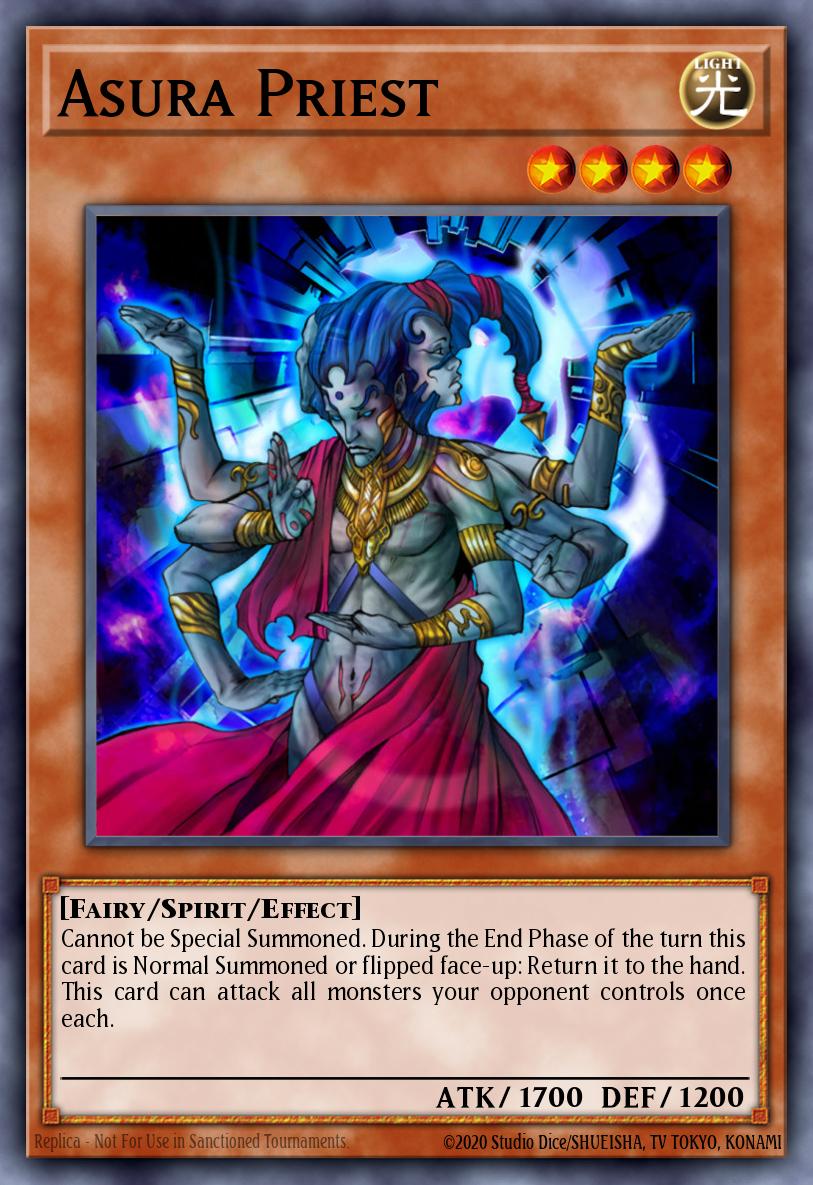 Asura Priest is, at the time of this writing, the go-to replacement for Exarion Universe among the online communities. And to be fair, it definitely has some upsides. It can clear a field of Scapegoat tokens in a single Battle Phase and force an opponent to play Sakuretsu Armor or other battle traps. Asura Priest also pressures weak defensive positions more than most other cards. In that way, it is a prime replacement for Exarion Universe.
Asura Priest is, at the time of this writing, the go-to replacement for Exarion Universe among the online communities. And to be fair, it definitely has some upsides. It can clear a field of Scapegoat tokens in a single Battle Phase and force an opponent to play Sakuretsu Armor or other battle traps. Asura Priest also pressures weak defensive positions more than most other cards. In that way, it is a prime replacement for Exarion Universe.As a Spirit monster, Asura Priest can act as an aggressive card that is naturally protected from Snatch Steal and Thousand-Eyes Restrict. As a LIGHT monster, it is natural Chaos fodder for Black Luster Soldier - Envoy of the Beginning plays. It can put in damage against simple board states without having to over-commit to the board as well. This makes it harder for the opponent to respond to if they in a disadvantageous position.
Asura Priest is best when used to clear Scapegoat tokens and mid-level attackers, but is weak against high-DEF cards. This means that cards such as Gravekeeper's Spy and Spirit Reaper can wall it easily. This usually isn't a major issue, however. What is an issue is that playing Asura Priest along with two copies of Tsukuyomi can clog the hand with Spirit monsters. It's also weak to other beaters such as D.D. Assailant, Skilled Dark Magician, and Airknight Parshath. It is also not useful as a defensive option in any way, shape, or form.
Blade Knight
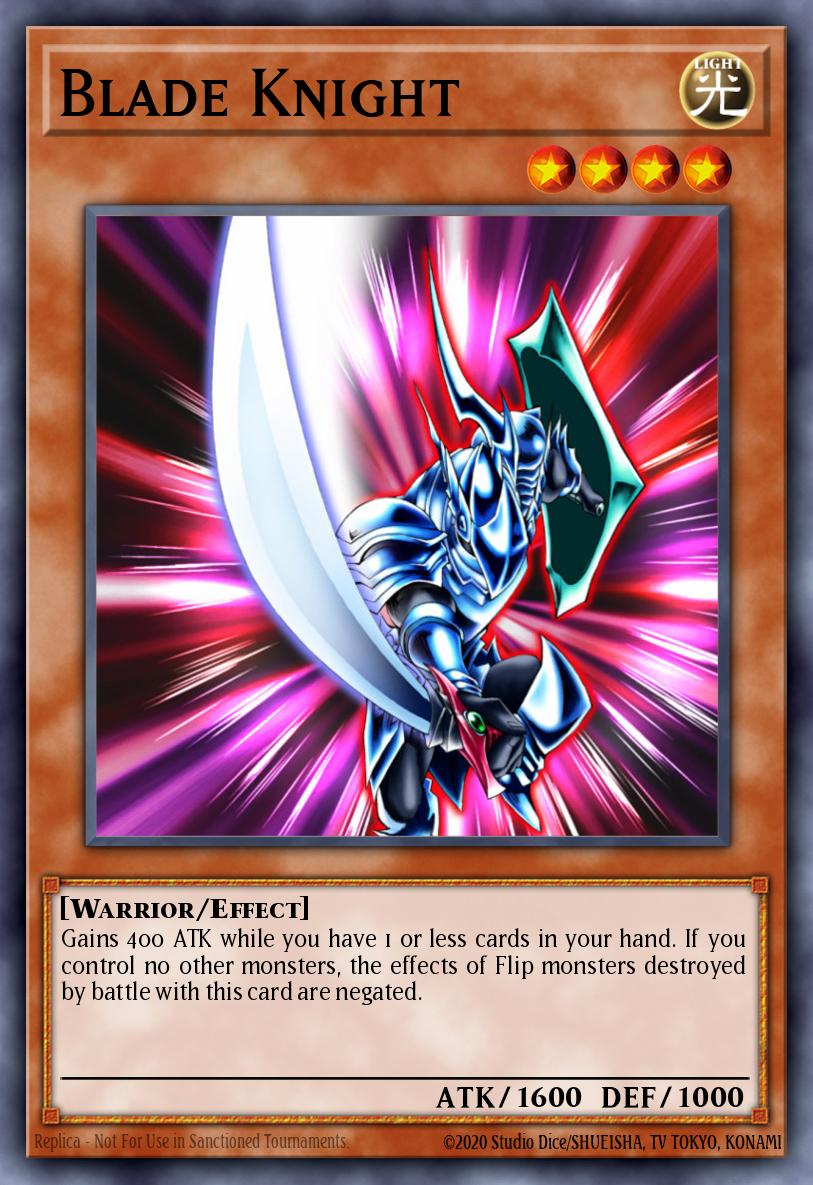 Blade Knight was occasionally seen in decks back in 2005 and still pops up in modern lists today. People always want to make him work, and it's easy to see why. The ability to be a 2000 ATK beatstick, while also negating Flip Effect monsters is pretty strong. It can punish players for playing too passively, and is also a LIGHT monster for Chaos plays.
Blade Knight was occasionally seen in decks back in 2005 and still pops up in modern lists today. People always want to make him work, and it's easy to see why. The ability to be a 2000 ATK beatstick, while also negating Flip Effect monsters is pretty strong. It can punish players for playing too passively, and is also a LIGHT monster for Chaos plays.Blade Knight has a reputation as a love-it-or-hate-it kind of card. Some want to always see the upside of the card and try to find ways to make it work. Others think that the opportunity cost of Blade Knight is low when compared to other options. However, Blade Knight is extremely weak to Tsukuyomi, meaning it takes further planning to get the most use out of Blade Knight.
The biggest problem is the fact that you have to actually be behind in order to get the most out of him. It's best when you're topdecking in a simplified gamestate...but if you're in that position to begin with, chances are Blade Knight won't do you much good. It can be good in the early game, as you can catch early Flip monsters with it. But come the midgame, chances are it won't do what you want it to do. It's just too variable.
D.D. Assailant
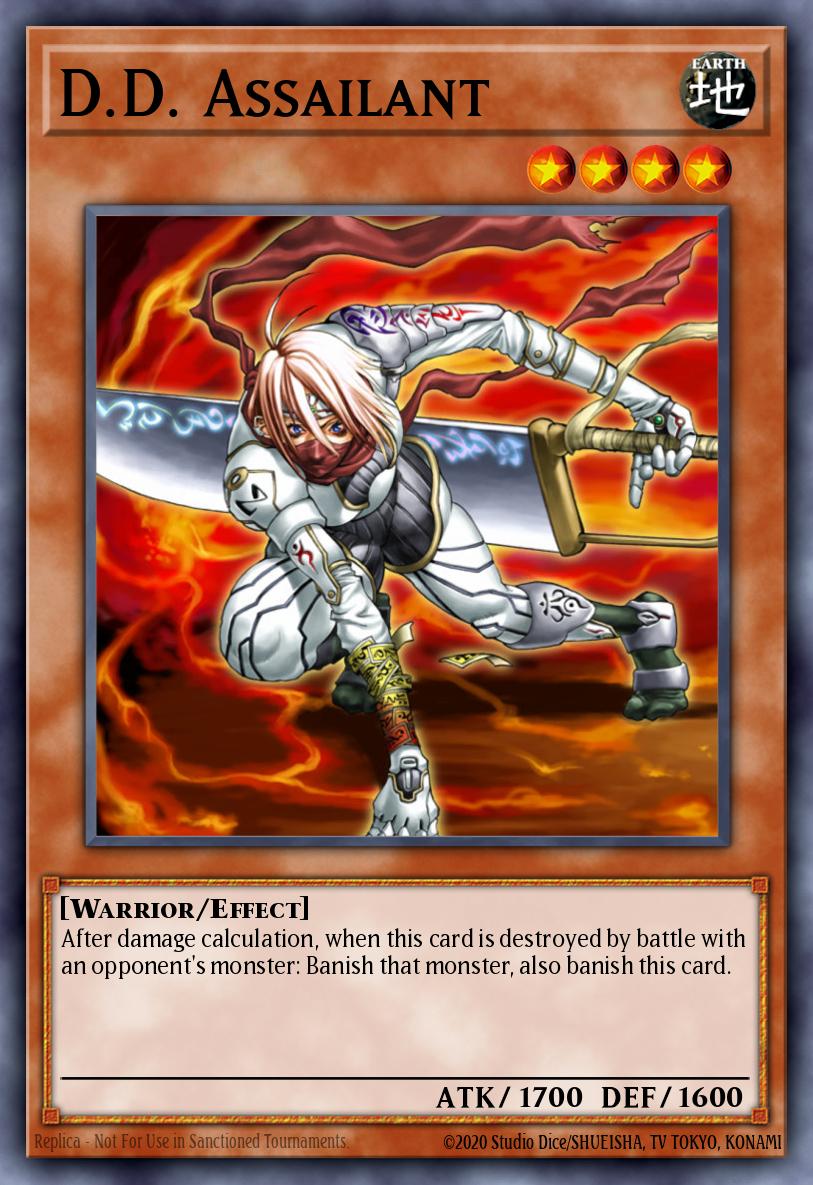 D.D. Assailant was ubiquitous back in the day, seen in almost every tournament-topping deck. It's not surprising; pre-Exarion Goat Format is less aggressive than Exarion Goat Format, and D.D. Assailant is a strong aggressive option amid a format full of passive plays.
D.D. Assailant was ubiquitous back in the day, seen in almost every tournament-topping deck. It's not surprising; pre-Exarion Goat Format is less aggressive than Exarion Goat Format, and D.D. Assailant is a strong aggressive option amid a format full of passive plays.Though Goat Control prefers complex gamestates over simple ones, D.D. Assailant is almost always a guaranteed one-for-one. Packaged in a body with a higher attack than most monsters seen in the Modern period, D.D. Assailant can remove threats bigger than himself when destroyed by battle.
He is also prime Nobleman of Crossout bait, which will allow you to set Flip monsters such as Magician of Faith with more confidence. Perhaps more importantly, however, is the fact that D.D. Assailant is large enough to force the activation of battle traps. He threatens the opponent's life points and forces them into awkward situations. In those regards, at least, D.D. Assailant shines.
However, it doesn't punish Goat tokens, nor will it wall Airknight Parshath. It does remove Parshath if attacked, but your opponent will still plus even if their Parshath gets banished. D.D. Assailant can also be countered simply by setting against it, since it can't deal piercing damage through set monsters. In this way, there might be other options that you may want to test out.
Regardless, D.D. Assailant is a strong monster with a solid effect. As far as an aggressive replacement for Exarion Universe, you could definitely do worse.
D.D. Warrior Lady
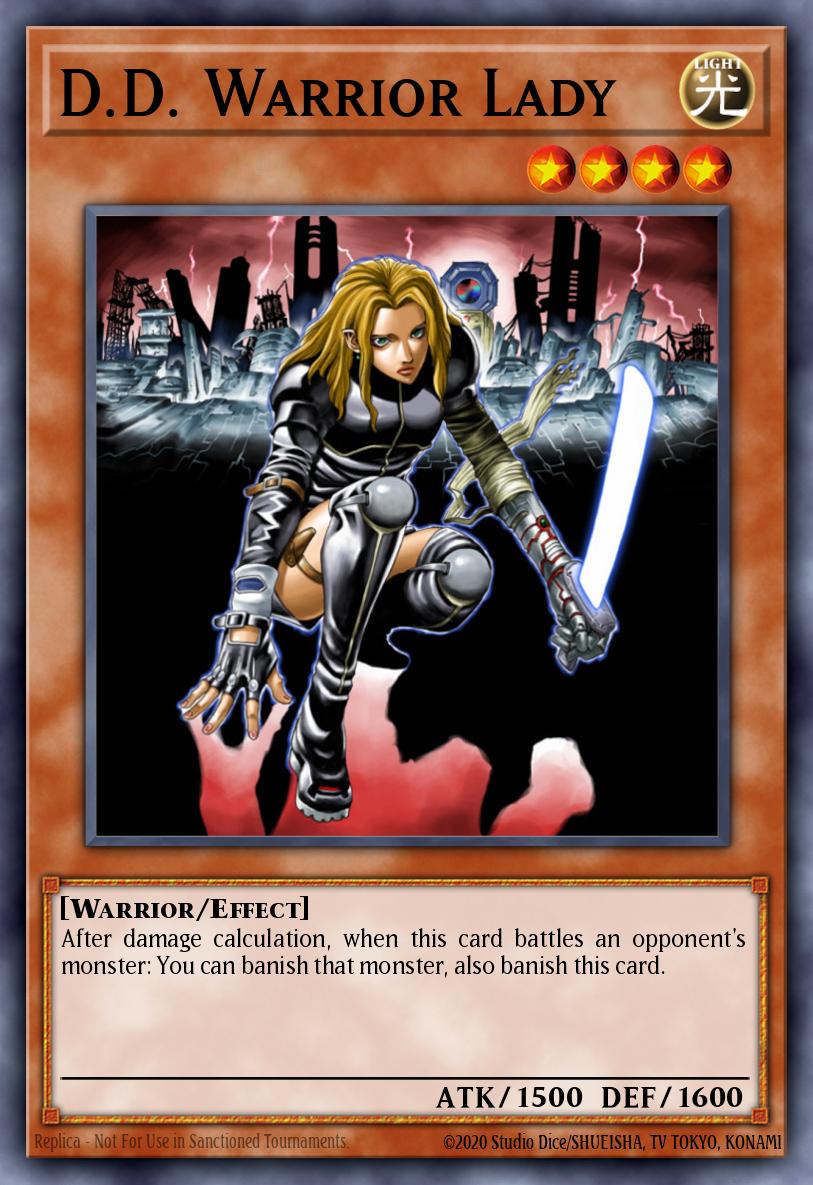 D.D. Warrior Lady was considered a near-staple back in 2005. It's not surprising; it was a three-of back when Chaos Emperor Dragon - Envoy of the End was running amok. D.D. Warrior Lady was a Swiss Army Knife back in the day, and was included in most historical Goat Format decklists.
D.D. Warrior Lady was considered a near-staple back in 2005. It's not surprising; it was a three-of back when Chaos Emperor Dragon - Envoy of the End was running amok. D.D. Warrior Lady was a Swiss Army Knife back in the day, and was included in most historical Goat Format decklists.Today, it is often paired with Asura Priest as the two replacements for Exarion Universe in the Perovic Build. If you frequent DuelistGroundz, you'll likely hear this strategy referred to as the "Detox" list. It's simply Perovic minus Exarion and plus Asura and D.D. Warrior Lady.
D.D. Warrior Lady is often used to clear out attackers such as Skilled Dark Magician, D.D. Assailant, and even Black Luster Soldier - Envoy of the Beginning if the opponent is playing carelessly. More importantly, it can get rid of cards such as Sangan and Sinister Serpent by banishing them from play - something that D.D. Assailant cannot do. With 1600 DEF, D.D. Warrior Lady can stand up to mid-level attackers such as Tribe-Infecting Virus and Breaker the Magical Warrior as well.
There are certainly worse cards to play than D.D. Warrior Lady. It can play defense, it can play offense, it can force the activation of different Spell/Trap cards...it's a good card to play. Many players have put it back in their decks with Exarion Universe removed from the card pool.
Dekoichi the Battlechanted Locomotive
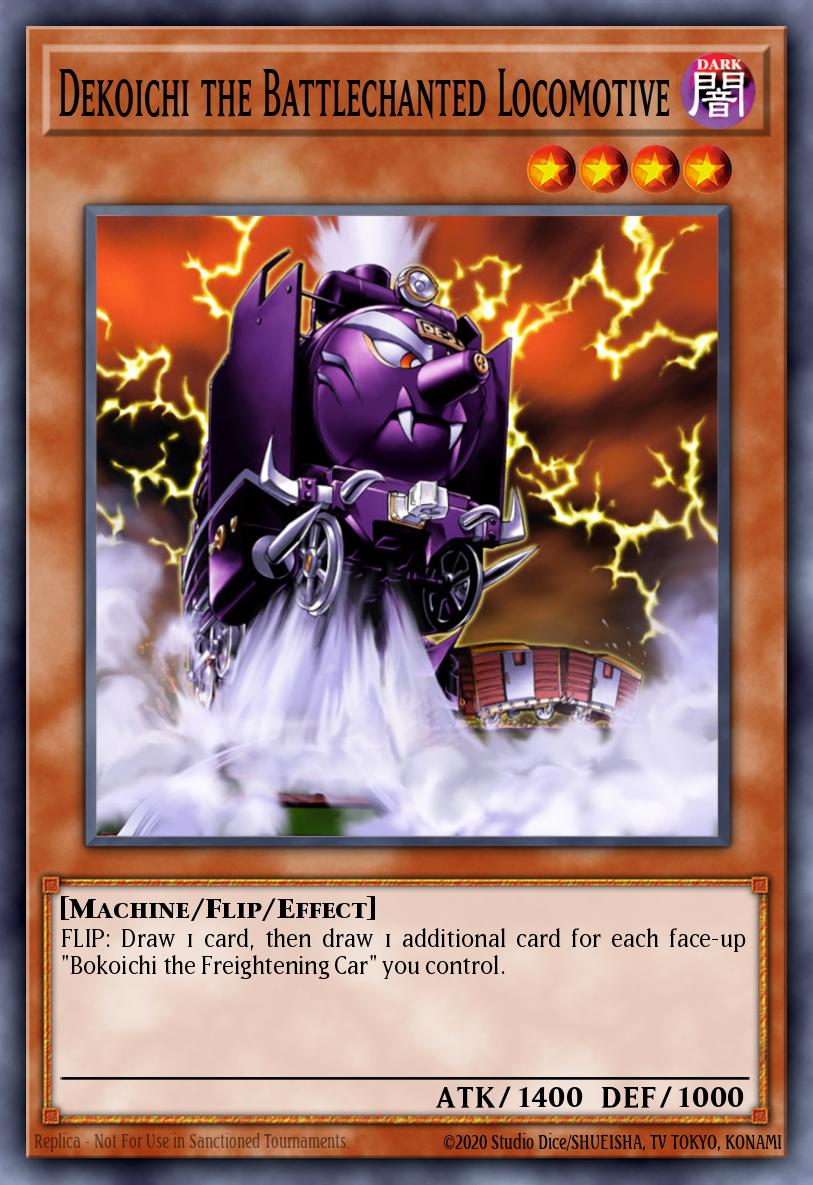 Dekoichi the Battlechanted Locomotive is not a bad card. Back in 2005, no one really played it. Maybe it was because it is a passive card; maybe it just was overlooked. Either way, drawing cards is great in a format as slow as Goats. But there's only so much room for yet more passive cards in a deck like Goat Control. While Dekoichi can do a lot, it doesn't really do anything that Exarion Universe did. It isn't an aggressive card, so it doesn't actively pressure the opponent. More importantly, Dekoichi doesn't stand up to Airknight Parshath or punish Scapegoat tokens. It simply...draws cards.
Dekoichi the Battlechanted Locomotive is not a bad card. Back in 2005, no one really played it. Maybe it was because it is a passive card; maybe it just was overlooked. Either way, drawing cards is great in a format as slow as Goats. But there's only so much room for yet more passive cards in a deck like Goat Control. While Dekoichi can do a lot, it doesn't really do anything that Exarion Universe did. It isn't an aggressive card, so it doesn't actively pressure the opponent. More importantly, Dekoichi doesn't stand up to Airknight Parshath or punish Scapegoat tokens. It simply...draws cards.And for some, there's nothing wrong with that. But Goat Format is a slow, control-oriented format with few active beatdown cards that work well. Dekoichi is a decent card and can be good against more aggressive options such as Chaos, but even then its scope is limited.
If you decide to play Dekoichi the Battlechanted Locomotive, you will need to find ways to be aggressive. Likely this will put more pressure on your Airknight plays, which requires more setup, as Airknight will be the only real aggressive option outside of Black Luster Soldier - Envoy of the Beginning. Replacing Exarion Universe in Goat Control is difficult, of course. But going too passive with your replacement may lead to games where you have a hard time putting pressure on the opponent.
Skilled Dark Magician
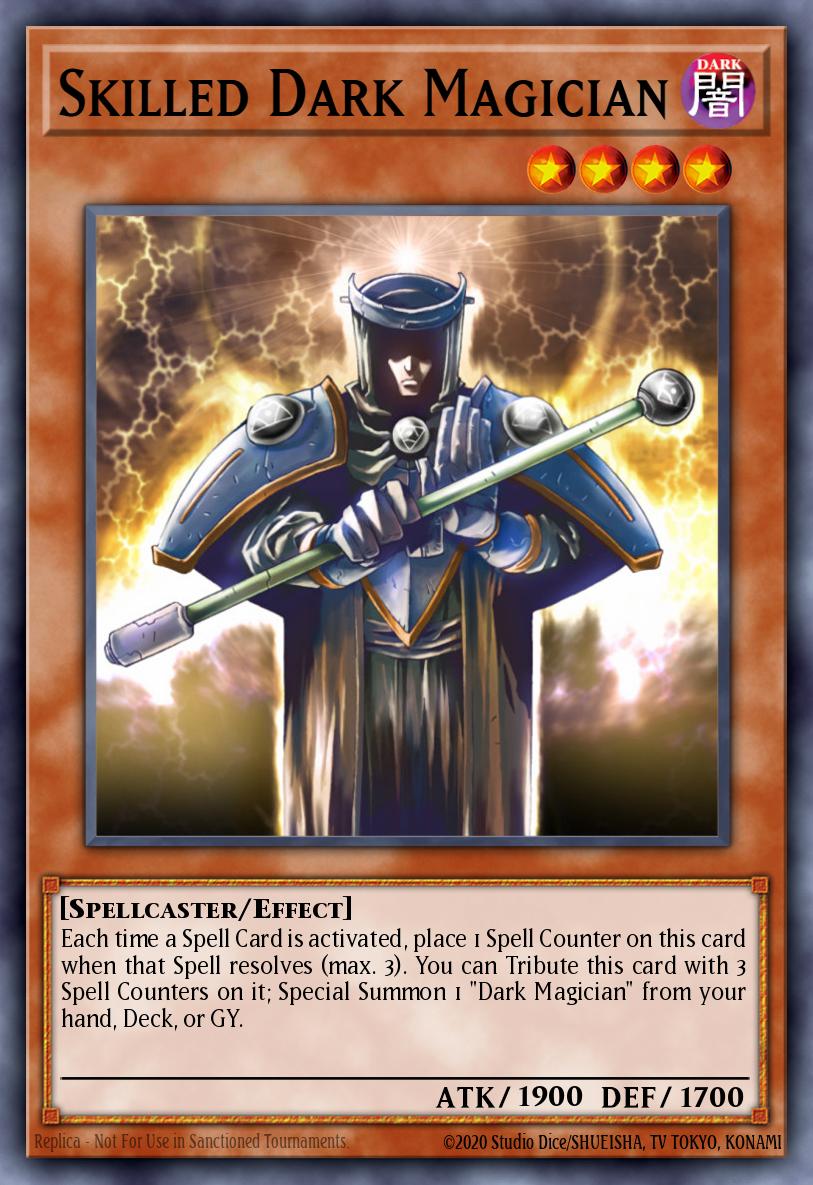 Skilled Dark Magician was often considered a vanilla beatstick back in 2005. People played it mostly in pure aggro decks, but they rarely saw success with it.
Skilled Dark Magician was often considered a vanilla beatstick back in 2005. People played it mostly in pure aggro decks, but they rarely saw success with it.However, replacing Exarion Universe in Goat Control requires us to look at what Exarion does well. This is primarily applying pressure. As a 1900/1700 DARK Spellcaster, Skilled Dark can definitely apply pressure. If it's included in a decklist, it's often one of the more difficult monsters for an opponent to out. This alone increases its value.
Skilled Dark doesn't punish Scapegoat tokens, but it punishes a lot of other things. More importantly, it's a card that's going to require one or more power cards to get over. It is a target for opposing battle traps, Snatch Steal, Thousand-Eyes Restrict, and can even force an opponent into a desperate Black Luster Soldier drop.
It's a card that is quite powerful in terms of its ATK and DEF, but that's all it brings to the table. Its main advantage over other 4-Star 1900 ATK monsters of the format is its high DEF, which sits at 1700. This allows it to effectively block Tsukuyomi, and makes for a good defensive wall against anything not named Airknight Parshath.
Spirit Reaper
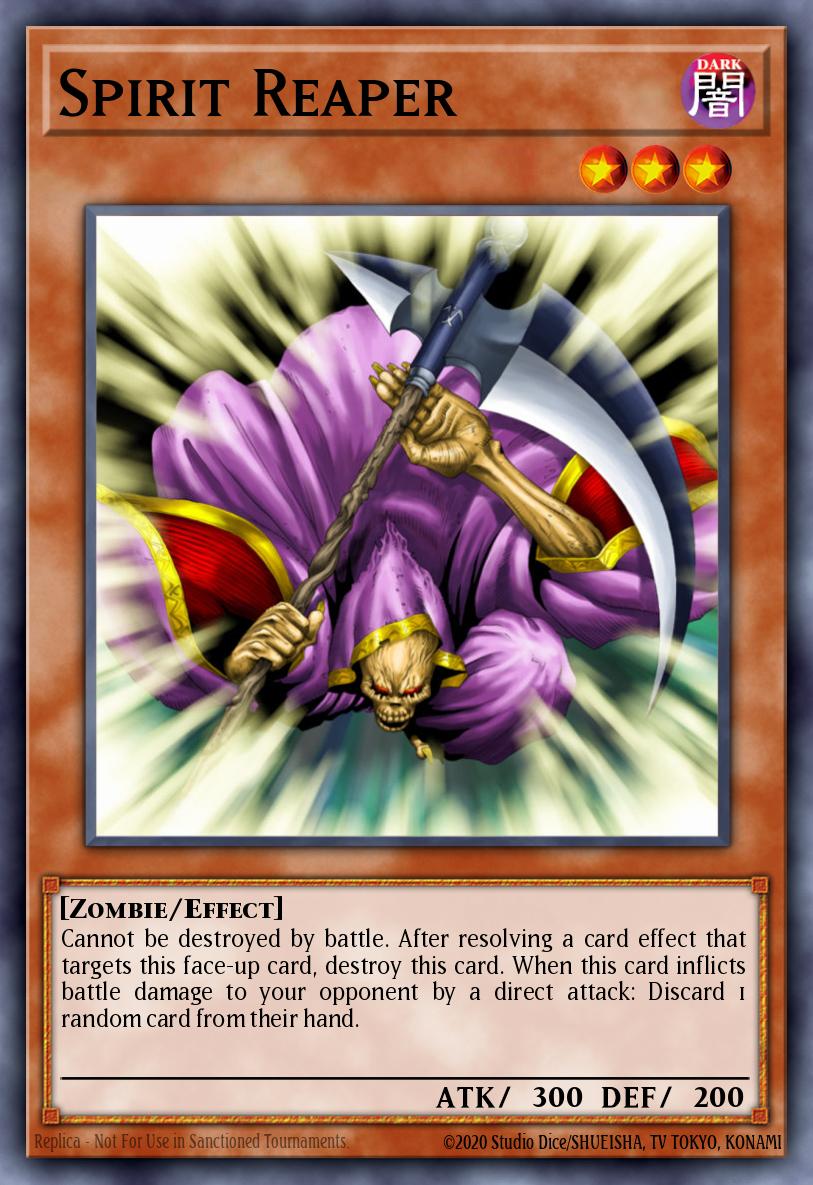 Spirit Reaper was seen a lot back in the historical era. Come the Revival period, however, people began to realize that Reaper ended up as a damage sink more than not. With Exarion's ability to pierce, both Scapegoat and Spirit Reaper became major liabilities - much more than when it was just Airknight Parshath as the main piercer.
Spirit Reaper was seen a lot back in the historical era. Come the Revival period, however, people began to realize that Reaper ended up as a damage sink more than not. With Exarion's ability to pierce, both Scapegoat and Spirit Reaper became major liabilities - much more than when it was just Airknight Parshath as the main piercer.But now that we've moved into the Modern era, Reaper is being reevaluated as a major component of many a decklist. Being able to not only withstand a barrage of attacks, but also be aggressive, since it can discard a card out of the opponent's hand, has caused many duelists to play around with Reaper once again.
Reaper doesn't replace Exarion's aggression, nor does it punish Goat tokens. However, alongside other beaters that can clear monsters, Reaper can be a nightmare. This is especially true if you're able to get an attack through and deal damage with it, since it'll rip a card out of the opponent's hand.
Of course, Reaper is a double-edged sword. Its strong defensive capabilities and crippling offensive effect make it a potent card. But it's still weak to any monster if it's in attack position, and can still be a damage sink against monsters that pierce. It's definitely worth testing, but it may not make the cut over the more aggressive cards covered.
Conclusion
These monsters have been widely tested by myself, the online community, and most anyone else who has experience with Goat Format. They are tried and true monsters that may or may not have a place in your deck. It's up to you to test them out thoroughly and find which ones are the right fit for you.
You'll notice the cards listed are all monsters. This is because the Spell and Trap lineups for Goat Control are mostly optimized. Some people may deviate from the Perovic S/T lineups, but most don't. It takes serious testing to determine whether you think you should change that particular lineup, but in the end, what you play is up to you.
As always, you can contact me any time at [email protected], or send me a message through the forums.




